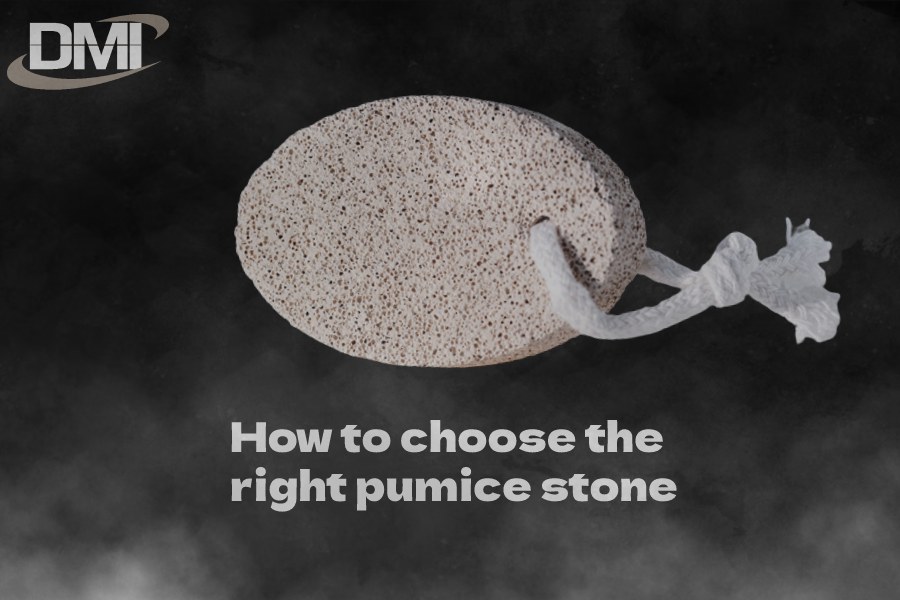Introduction
Pumice stone is a volcanic rock that is formed from volcanic ash and gas. Furthermore, it is a light and porous rock filled with air pockets, which makes it float on water. In general, it is light gray, beige, or an off-white color, with a rough texture perfect for exfoliation and scrubbing.
Particularly, thousands of years ago, it was used for many reasons. The ancient Greeks used this rock to remove unwanted hair, and the Romans used it to clean their skin and clothes. Now, it is commonly used in the beauty industry as a natural exfoliant in soaps, scrubs, and other skincare products.
Besides its beauty benefits, pumice stone also has practical uses. In agriculture, it is widely used to enhance soil drainage and aeration. Aside from that, it can be used to remove stubborn water stains from toilets and other surfaces.
In addition, in this blog you will learn all about volcanic stone. Let’s begin without wasting more time.
What Is Pumice Stone
It is an organically formed volcanic rock from lava and water. It is a light and porous rock that is full of tiny air pores, which makes it buoyant and enables it to float on water. Specifically, it is widely used in the skincare industry as a natural exfoliant in soaps, scrubs, and other skincare products.
History Of Pumice Stone
It is a volcanic rock used for a variety of purposes for thousands of years. The word “pumice” derives from the Latin term “pumex,” which means “foam.” It is formed from volcanic ash and lava explosively released from a volcano. The lava cools rapidly, trapping gas bubbles within the rock, creating the porous, light texture of the stone.
In prehistoric times, it was used, with evidence found in ancient Egypt, Greece, and Rome.In these countries, pumice was used for a variety of purposes, including as a natural abrasive for cleaning and polishing. It was also used as a soil conditioner in agriculture, and as a building material for construction.
In ancient Egypt, pumice was utilized for hygienic purposes, especially for removing unwanted hair. Pumice was used by Egyptian women to exfoliate their skin and remove unwanted hair, and by men to shave their beards. It is commonly used in personal care products such as soaps, exfoliating scrubs, and foot scrubs.
Tips for using a pumice stone

#1. For your face and neck
- When using a it on your face or neck, it is important to choose a small and smooth pumicite. Certainly, a larger or rougher stone can irritate or damage skin.
- Before using the pumicite, wash your face and neck with a soft cleanser and pat dry. Make your skin soft by soaking a towel in warm water and keeping it on your face and neck for 5-10 minutes.
- Use smooth, circular strokes to scrub your face and neck with a this rock. Avoid applying too much pressure, as this may cause skin irritation or redness.
- After using the pumice stone on your face and neck, wash your skin with warm water and pat it dry. Use a mild moisturizer to ensure your skin is hydrated and smooth. Consequently, you can clean your face and neck effectively with it.
#2. For hair removal
- When using a it for hair removal, choose a medium-sized and rougher pumicite to remove unwanted hair effectively.
- Afterward, soak the area where you intend to remove the hair in warm water for at least 5-10 minutes to soften the hair follicles.
- Spritz it with hot water and apply it to the area circularly. Scrub with light pressure and avoid scrubbing too forcefully, as this can lead to skin reactions or redness.
- After hair removal, rinse the area with warm water and pat dry. Use lotion to keep the skin moisturized and prevent skin rashes.
Properties of pumice stone
It is primarily composed of silica dioxide (SiO2) and aluminum oxide (Al2O3), with smaller amounts of iron oxide (Fe2O3), calcium oxide (CaO), and magnesium oxide (MgO). The specific mixture can vary based on the location where it was made.
Additionally, It has a porous and lightweight texture that makes it an excellent exfoliant. The porosity of this stone can range from low to high, depending on the size and distribution of gas bubbles. A pumicite texture can range from fine to coarse.
It’s usually white, cream, grey, brown, or black depending on where it was formed. It’s also possible for the color to vary within a single piece of pumice, depending on what minerals are in there.
The quality and grade can vary depending on its texture, porosity, and other characteristics. A texture is determined by its mesh size, which determines its fineness or coarseness. In general, the finer the mesh, the gentler the exfoliating properties of pumice stone. There are different grades ranging from fine to extra coarse.
Overall, the unique properties make it an effective and popular natural exfoliant for skin care, foot care, and cleaning applications.
What are the risks associated with using a pumice stone, and when should you avoid using it?
While it is generally safe to use for exfoliating the skin, there are some risks associated with its use. Be aware of these risks and take precautions to avoid them.
- It is a rough, abrasive material that can cause skin irritation or damage if used incorrectly or too frequently. To avoid this risk, use it gently and in moderation, no more than once or twice a week.
- The risk of infection goes up when you use it on an open wound or broken skin. Avoid using a pumicite on areas with open wounds, cuts, or scratches.
- it should not be used on sunburned or otherwise irritated skin, as it can cause further damage and discomfort.
- Some people may be allergic to pumicite or the materials used to manufacture it. It should not be used if itching, swelling, or redness are symptoms of an allergic reaction.
- People with diabetes should avoid using a this stone on their feet, as they may have reduced sensitivity to pain and may not feel any skin damage caused by the abrasive stone.
How to choose the right pumice stone

Grade:
It is available in different grades ranging from fine to extra coarse. The finer the grade, the gentler the exfoliating properties. Choose a grade based on the skin area you want to exfoliate and your skin sensitivity.
Texture:
It can have a range of textures from smooth to rough. Your skin should feel comfortable and effective when you choose a texture.
Porosity:
Pumice stone porosity can affect its ability to absorb water and lather soap. Choose this stone with a porosity that suits your preference.
Size and Shape:
Different sizes and shapes are available.. Choose a size and shape that suits the area you want to exfoliate, such as a smaller stone for facial exfoliation and a larger one for foot exfoliation.
Quality:
Look for pumice stone made from high-quality volcanic rock that is free from impurities. Avoid stones that have cracks or are too brittle, as they may break easily during use.
Brand:
Ensure that you are getting a high-quality pumicite by choosing a reputable brand.
Conclusion
In conclusion, We have revealed the secrets of pumice stone as well as show you the benefits & risks using it. Finally, it is the best product for your face, neck & hair removal as well. We’d appreciate it if you would recommend this blog with your friends if you enjoyed it.



